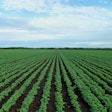
Indigo Agannounced the completion of its second carbon crop, that consisted of more than 110,000 agricultural carbon credits, aiding the industry in its effort to become moresustainable.
Indigo’s carbon crop program rewards participating producers who adopt sustainable farming practices. By selling carbon credits based on the amount of carbon and greenhouse gases that are prevented from entering the atmosphere, Indigo is able to pay farmers to be more sustainable. The credits are issued by theClimate Action Reserve.
With sustainable agriculture gaining momentum as a vital tool to combat climate change, the need to scale nature-based solutions is at an all-time high. Indigo’s first carbon crop - issued in June of 2022 and consisting of more than 20,000 credits - established the company as the first to ever generate verified, registry-issued agricultural carbon credits at market scale.
This second carbon crop further demonstrates the repeatability of this process, the potential for exponential growth, and the appeal to both farmers and buyers. It also reinforces the ability of farmers, and the agriculture industry broadly, to have a real, measurable, and durable impact on one of the world’s largest carbon sinks.
“Our second crop of soil-based carbon credits signifies the enormous growth and potential for farmers to sequester more carbon in the soil while increasing their own profitability, with 75% of the credit revenue going directly back to farmers,” said Ron Hovsepian, president & CEO of Indigo Ag. “The verified credits produced by the Carbon by Indigo program represent significant and immediate environmental benefits. We are incredibly excited about the strong demand we are seeing from companies looking to high-quality offsets as part of their climate roadmaps.”
Carbon by Indigo Farmers Produce the Highest Quality Agricultural Carbon Credits Available on the Voluntary Market
The second crop of credits represents more than 110,000 metric tons of carbon dioxide and other greenhouse gas emissions sequestered or abated by farmers. The credits were produced by nearly 430 farmers across 22 U.S. states, including existing and new farmers and new fields in their operations. The second carbon crop demonstrated the program’s growth and durability, as Indigo’s carbon program realized a roughly 5x credit growth from its inaugural crop.
Indigo’s growing network of global partner companies, including many long-term buyers, have committed to purchasing Indigo’s verified agricultural carbon credits in advance of this new carbon crop.
“One of the reasons we work with Indigo Ag is that their monitoring and verification protocol is of high quality in the soil carbon credit space,” said Stacy Kauk, head of sustainability at Shopify. “This gives us the reassurance we need to be a part of a soil carbon project.”
Indigo Ag is the only company producing verified, registry-issued soil carbon credits at scale, rewarding farmers for adopting sustainable farming practices that benefit the environment and their operations. The Carbon by Indigo program includes removals and abatement of carbon dioxide and other greenhouse gases. The credits are measured, verified and issued under the most rigorous scientific standards, making them the highest quality agricultural carbon credits available on the voluntary market. The program’s economic and agronomic incentives for farmers establish long term viability for the program.
For the first and second carbon crops, Carbon by Indigo farmers were paid $30/credit, a 200% increase over the original guaranteed payment rate.
“The economic and agronomic benefits of joining the Carbon by Indigo program made it an easy decision for us,” said Kenton Carley, an Illinois corn and soybean farmer. “Carbon by Indigo has allowed us to earn an additional revenue stream from our operations, while continuing to improve soil health for future generations. We’re incredibly pleased to see the growth in this program.”





















